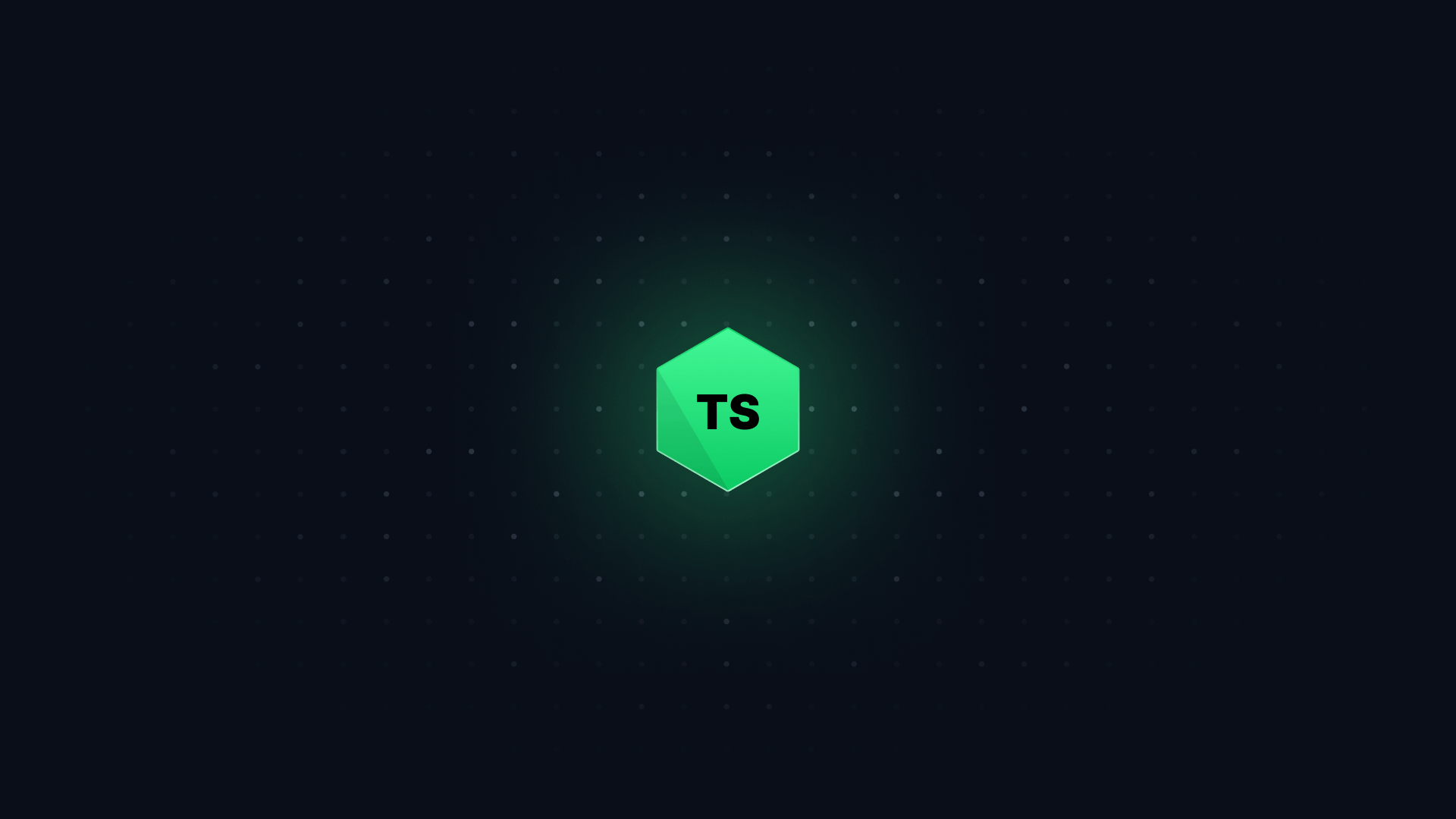TypeScript has become the most popular way to write JavaScript. These days, if you want to get a job writing JavaScript, you'll need to know TypeScript.
But TypeScript is big. It's easy to end up in tutorial hell.
This step-by-step guide will help. I've built a set of dozens of questions that are designed to focus your learning on the most important parts of TypeScript.
With each question, I've provided a short explanation and a link to further resources.
By the end, you'll have learned enough TypeScript to feel productive, and get paid.
#
I'm Matt Pocock. I've worked at Vercel and Stately as a developer advocate. Now, I teach TypeScript full-time.
I'm on YouTube and Twitter, and I've got a Discord Server. Come say hello!
#
If you're looking for something more interactive, my free Beginners TypeScript Tutorial is a fantastic place to start. It's a great way to get straight into coding, if that's your vibe.
#
- You must know JavaScript to a beginner level. You'll need to know about variables, functions, objects, and all the basic parts of JS.
- You must know how to use the command line. You'll need to be able to run commands like
npm install and npm run build.
#
- Look at each question carefully. Each question is designed to make you curious for more information at exactly the right time.
- Make sure you understand the answer to the question before moving on.
- If you get stuck, you can tweet me or ask a question in my Discord Server.
Best of luck!
#
#
#
TypeScript is a set of tools that make writing JavaScript more pleasant.
The tools include:
- The TypeScript Language, written in
.ts and .tsx files.
- The TypeScript Compiler, which turns TypeScript files into JavaScript files via the
tsc CLI.
- The TypeScript Language Server, which powers the TypeScript experience in your IDE.
You can learn more on TypeScript's Landing Page.
#
You'll need to install Node.js in order to use TypeScript to its fullest potential. Choose the LTS version.
You'll also need a code editor. I recommend VSCode.
#
TypeScript makes your IDE more powerful. It gives you autocomplete, in-IDE errors, and many more powerful features.
const user = {
firstName: "Angela",
lastName: "Davis",
role: "Professor",
};
console.log(user.name);Property 'name' does not exist on type '{ firstName: string; lastName: string; role: string; }'.2339
Property 'name' does not exist on type '{ firstName: string; lastName: string; role: string; }'.
It also means you're less likely to ship bugs. In 2019, Airbnb found that 38% of bugs they'd shipped to production could have been prevented by TypeScript. Watch this talk to learn more.
#
TypeScript uses some syntax which isn't in native JavaScript. For example, TypeScript has a type keyword, which JavaScript does not.
Because browsers only understand JavaScript, they can't run TypeScript files.
This means that to use TypeScript on the web, you need to turn TypeScript files into JavaScript files before you can send them to the browser.
#
You can use the tsc CLI to compile TypeScript files into JavaScript files. You'll need to:
- Install TypeScript on npm
- Add a
tsconfig.json file to your project (which tells TypeScript what to do)
- Run
tsc to compile your TypeScript files into JavaScript files
This guide from VSCode will help you get started.
#
If you want to build a frontend application, you should use a frontend framework. Almost any modern framework you choose will support TypeScript out of the box.
If you're not sure which to choose, I recommend Vite as a great place to start.
Frameworks like Vite take the responsibility of turning .ts files into .js files - as well as LOTS of other things.
This means you don't need to run tsc manually. Take a look at Vite's getting started guide to learn more.
#
Using TypeScript on CI is a great way to make sure your project is free of bugs. Once this is set up, your CI will fail if your project has any TypeScript errors.
GitHub Actions are a great way to try this out. But you can use TypeScript on any Linux-based, Windows-based, or MacOS-based CI. Anywhere Node.js runs, you can use TypeScript.
#
Let's take a look at the essential parts of TypeScript's type system first.
Before you continue, I recommend you read the Basics section of the TypeScript Handbook. This'll give you some good context for the rest of this section.
#
The first thing I recommend you learn is how to add types to a function's parameters.
This lets you add types to this greet function:
function greet(name: string) {
console.log(
"Hello, " + name.toUpperCase() + "!!"
);
}
The greet function will then only be able to accept a string as its first argument:
greet(42);Argument of type 'number' is not assignable to parameter of type 'string'.2345
Argument of type 'number' is not assignable to parameter of type 'string'.
Learn more in the Parameter Type Annotations section of the TypeScript handbook.
#
TypeScript's basic types are string, number, boolean, and symbol. These represent the basic primitives that make up the JavaScript language.
let example1: string = "Hello World!";
let example2: number = 42;
let example3: boolean = true;
let example4: symbol = Symbol();
Here, we're also assigning those types to variables. This means that TypeScript will only allow us to assign a string to example1, a number to example2, and so on.
example1 = 42;Type 'number' is not assignable to type 'string'.2322
Type 'number' is not assignable to type 'string'.
The TypeScript handbook has more information on strings, numbers, and booleans. If you don't know what a Symbol is, head to MDN.
#
You can also type the return value of a function. This lets you add types to this greet function:
function greet(name: string): string {
return "Hello, " + name.toUpperCase() + "!!";
}
This will ensure that the greet function always returns a string:
function greet(name: string): string {
return 123;Type 'number' is not assignable to type 'string'.2322
Type 'number' is not assignable to type 'string'.}
You can learn more from the TypeScript Handbook.
#
Next, you should look at object types. These let you describe the shape of an object.
function printCoord(pt: {
x: number;
y: number;
}) {
console.log(
"The coordinate's x value is " + pt.x
);
console.log(
"The coordinate's y value is " + pt.y
);
}
printCoord({ x: 3, y: 7 });
These are described in TypeScript's handbook.
You should also look at how to make properties of objects optional.
#
You might be thinking - what if I have a type that I want to use in multiple places? Do I have to write it out every time?
You can save types for later use using the type keyword:
type Point = {
x: number;
y: number;
};
function printCoord(pt: Point) {}
These are called Type Aliases.
#
You can type arrays in two ways. Either using the [] syntax:
let example1: string[] = ["Hello World!"];
let example2: number[] = [42];
Or, by using the Array<> syntax:
let example1: Array<string> = ["Hello World!"];
let example2: Array<number> = [42];
The TypeScript Handbook section, as well as my article comparing the two, will help you learn more.
#
Tuples are arrays with a fixed length, where each element has a fixed type.
let example1: [string, number] = [
"Hello World!",
42,
];
You can learn more about them in the TypeScript Handbook.
#
You can type functions using the () => Type syntax:
type MyFunction = () => string;
let example1: MyFunction = () => "Hello World!";
This is useful for typing callbacks passed to other functions:
function addEventListener(
event: string,
callback: () => void
) {
document.addEventListener(event, callback);
}
You can learn more about function types in the TypeScript Handbook.
#
You can type sets and maps using the Set<Type> and Map<KeyType, ValueType> syntax:
let example1 = new Set<string>();
example1.add(42);Argument of type 'number' is not assignable to parameter of type 'string'.2345
Argument of type 'number' is not assignable to parameter of type 'string'.
let example2 = new Map<string, number>();
example2.set("id", "abc");Argument of type 'string' is not assignable to parameter of type 'number'.2345
Argument of type 'string' is not assignable to parameter of type 'number'.
This syntax lets you pass types to functions - an important idea that will come up later. Without these types, Map and Set wouldn't understand what types they should be.
let example1 = new Set();
// No error!
example1.add(42);
example1.add("abc");
let example2 = new Map();
// No error!
example2.set("id", "abc");
#
You can type async functions by using the Promise<> syntax:
async function getGreeting(): Promise<string> {
return "Hello World!";
}
If you don't use a Promise, TypeScript will error:
async function getGreeting(): string {The return type of an async function or method must be the global Promise<T> type. Did you mean to write 'Promise<string>'?1064
The return type of an async function or method must be the global Promise<T> type. Did you mean to write 'Promise<string>'? return "Hello World!";
}
#
If you got this far, congratulations. You're doing great.
This guide is still incomplete! You can ping me at @mattpocockuk to give me a nudge to keep working on it.


